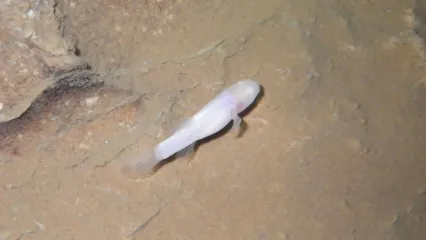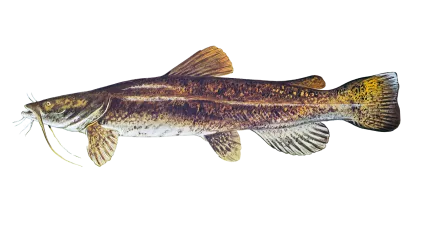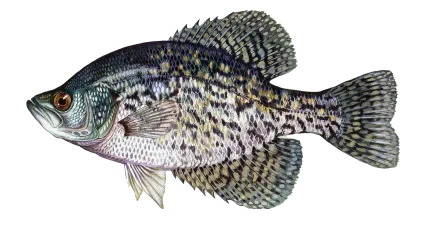
Description
The Ozark cavefish is a small fish that grows to a maximum length of two inches. Lacking pigment, its color appears as a pinkish-white. In addition, it has no pelvic fins and both dorsal and anal fins are set far back on its body. Although no external eyes are visible, the Ozark cavefish does have rudimentary eyes, though it lacks optic nerves.
Like many cave organisms, the Ozark cavefish is restricted to a specific geographic area with certain habitat characteristics. Degradation of this habitat from agricultural and heavy-metal runoff into groundwater recharge zones continues to be a threat to this and other aquatic cave organisms. Additional actions that have caused declines to this species include specimen collection and general disturbance from human entry into cave systems. Since 1993, the Wildlife Diversity Program has funded a project with Rogers State University to install protective gates on important caves for two federally-listed bats. An important component of this project was to monitor bat populations after gates were constructed. In 2009, these “bioinventories” were expanded to include other cave-dwelling fauna within these systems, including the Ozark cavefish. To date, at least four caves containing historic and existing Ozark cavefish populations have been outfitted with protective steel gates to prevent disturbance from human entry. These sites are periodically surveyed for Ozark cavefish to track changes in the population. Four Ozark cavefish caves are currently either owned by conservation agencies or receive protection through conservation easements. The Ozark Plateau National Wildlife Refuge owned by the U.S. Fish and Wildlife Service encompasses one site, while the Oklahoma Chapter of The Nature Conservancy owns or manages three caves. These actions minimize habitat degradation and human disturbance, and help protect portions of the groundwater recharge zone.
Size
No more than 2 inches in length.
Habitat
In Oklahoma, this species has been documented only in karst systems that can be accessed for surveys in Ottawa and Delaware counties. Although found regularly in at least six caves in the state, Ozark cavefish were likely to be historically abundant throughout the subterranean Springfield Plateau watershed in the Ozark highlands. Ozark cavefish also occur in Arkansas and Missouri. This species is restricted to aquifers in the Ozark highlands with high water quality.
Life Cycle
The life history of the Ozark cavefish has remained much of a mystery to biologists. It is speculated that less than a quarter of the fish in a population reproduce each year and the structure of its gills suggest that the species may be a gill or mouth-brooder. The observation of reproductive females indicates that spawning may occur during winter months. Despite its lack of eyes, the Ozark cavefish has well-developed sensory organs called papillae that allow it to navigate its way through dark cave environments. This species has a slow metabolism and has the ability to survive in water with low dissolved oxygen. Ozark cavefish feed on small aquatic invertebrates, such as copepods and isopods. Ozark cavefish have also been reported to feed on guano (bat feces), such as that of the gray bat. This species is long-lived and may live to be more than 15 years old. Juvenile cavefish have been observed hiding in the spaces between chert piles during cave surveys.


